- Excretion: Removal of wastes produced by metabolism
- Elimination: removal of undigested materials from body
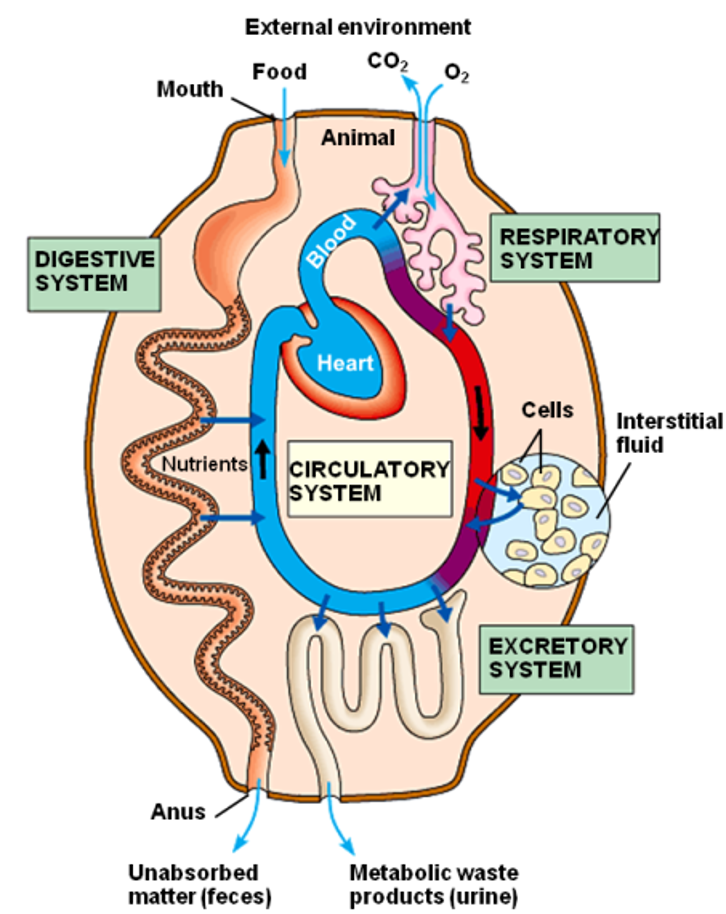
Types of metabolic waste produced by systems
- Digestive waste
- Respiratory waste
- Nitrogenous waste
- Excess water and salts
Excretion
- Removal of wastes produced by metabolism
- Main organs are lungs, sweat glands, alimentary canal and kidneys
| Organs | Substances Removed |
|---|---|
| Lungs | Carbon Dioxide |
| Sweat glands | Water, Salt & Urea |
| Alimentary Canal | Water & Bile pigments |
| Kidneys | Water, Salt & Urea |
- Every day, kidney filters litres (around 150 L) of fluid from bloodstream
- Lungs and skin also play roles in excretion
- Kidneys bear major responsibility for eliminating nitrogenous (contains nitrogen) wastes, toxins and drugs from the body
Function of Kidney
- Excretes most of waste products of metabolism
- Maintains acid-base balance of blood
- Produces Erythropoietin hormone, which stimulates bone marrow for RBC’s formation
- Converts vitamin D to its active form
- Produces Rennin enzyme, which regulates blood pressure
- Controls water and electrolyte balance of body
Urinary System Anatomy
- Left and right kidney
- Filters blood to remove wastes and produces urine
- Removes water, salt, urea and digested food molecules food molecules, and purifies blood
- Aorta
- Connected to renal artery
- Takes blood to kidney
- Inferior Vena Cava
- Takes blood out of kidney
- Renal Arteries
- Transport unfiltered blood into kidney
- Renal Veins
- Connected to Vena Cava, takes filtered blood out of kidney
- Ureters
- Carries urine from kidney into bladder
- Urethra
- Carries urine out of bladder to outside of body
- Bladder
- Temporary storage of urine
- Contracts to “squeeze” urine out of body
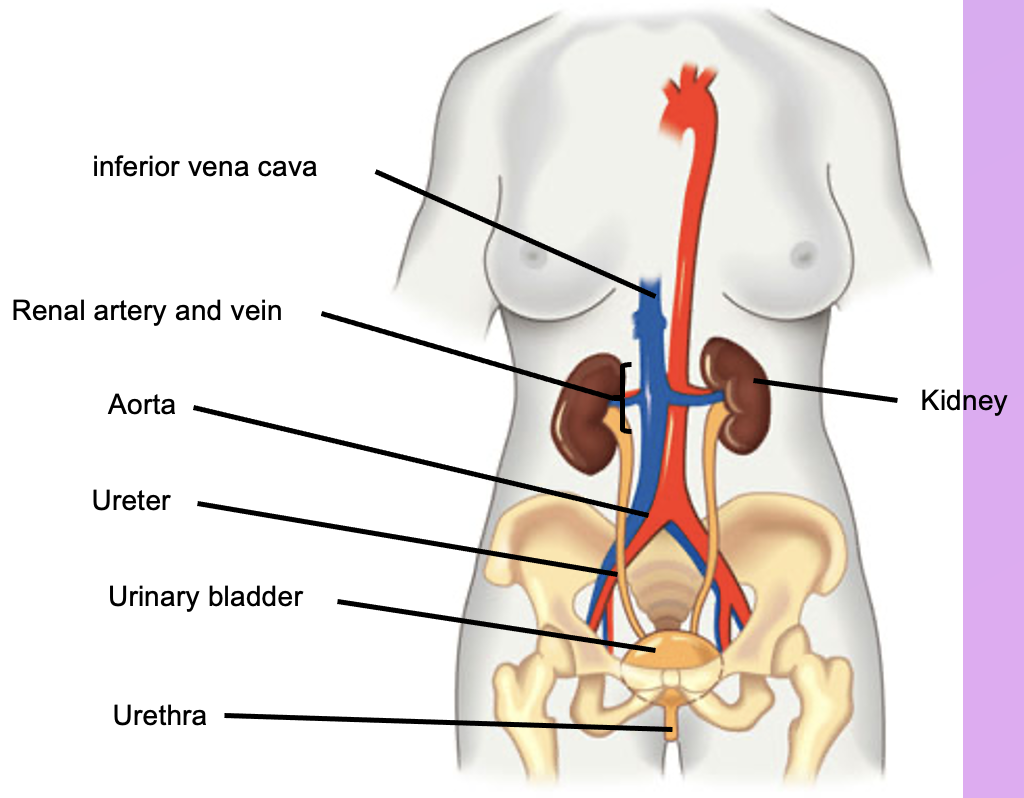
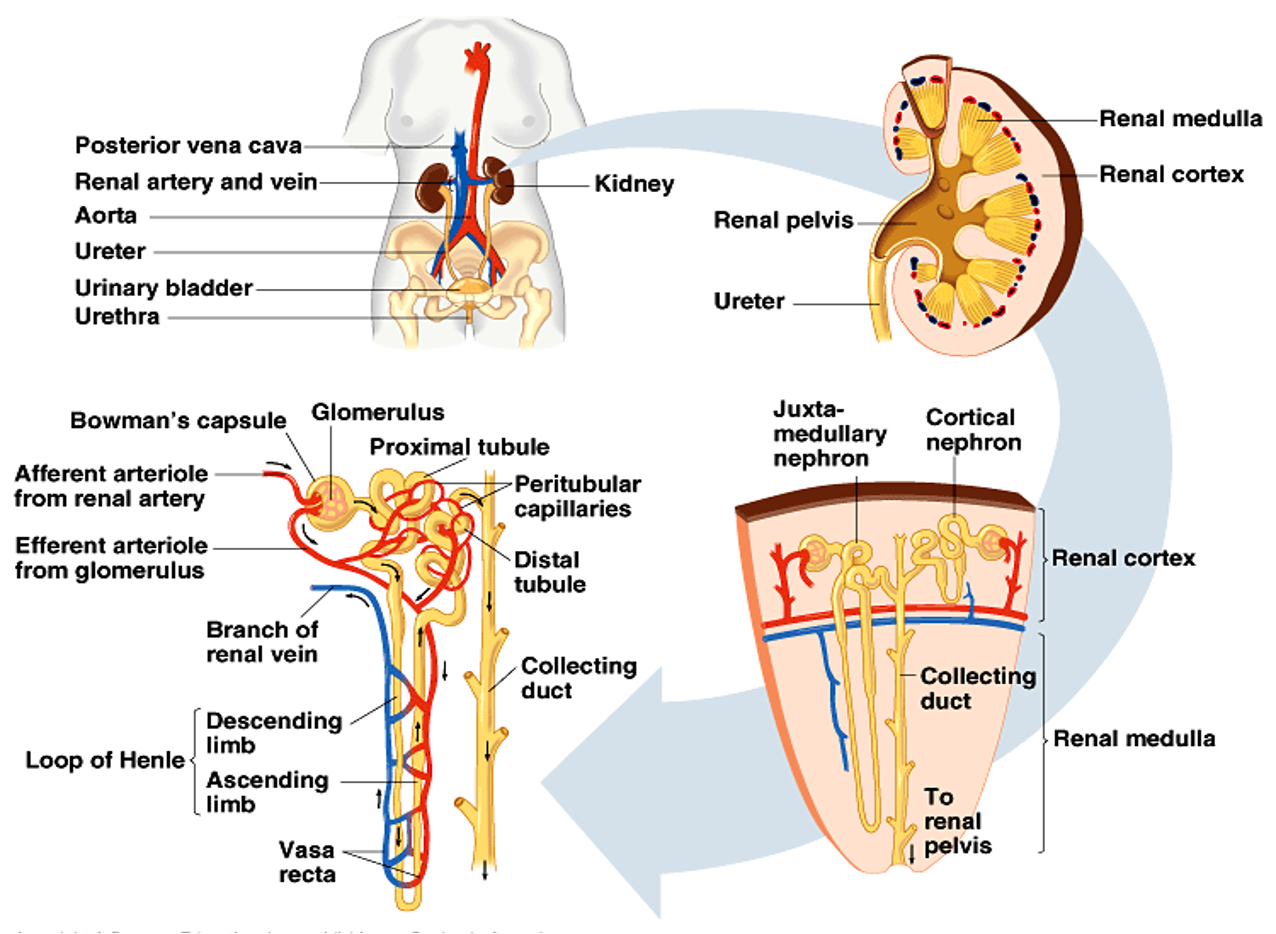
Basic Kidney Structure
- 3 main structural/functional areas
- Cortex (outside)
- Where filtration occurs
- Medulla (middle)
- Where useful substances are reabsorbed
- Pelvis (inside)
- Where urine collects before travelling down to bladder
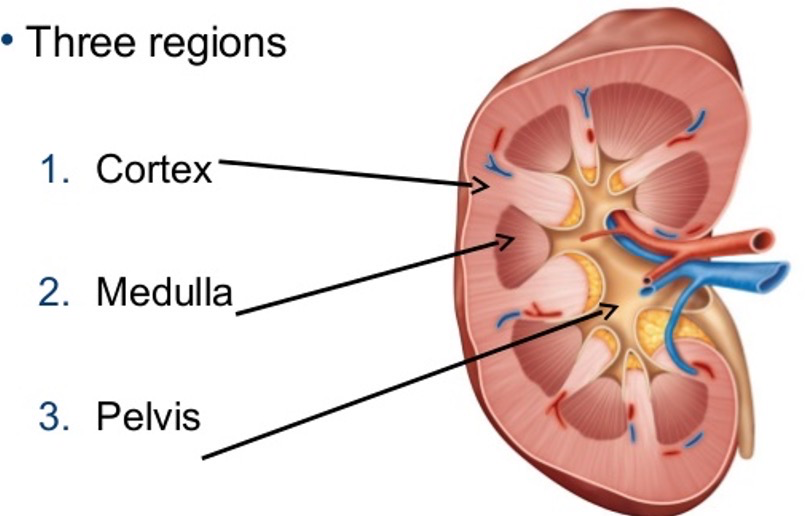
- Where urine collects before travelling down to bladder
Detailed kidney structure
In addition to the 3 functional areas, kidneys also have
- Outer capsule (skin)
- Renal pyramids within medulla
- Calyces (Calyx) within pelvis
- Hilum (small indentation) where tubes enter
- Ureter
- Transports urine to bladder
- Renal artery and vein
- Transports blood
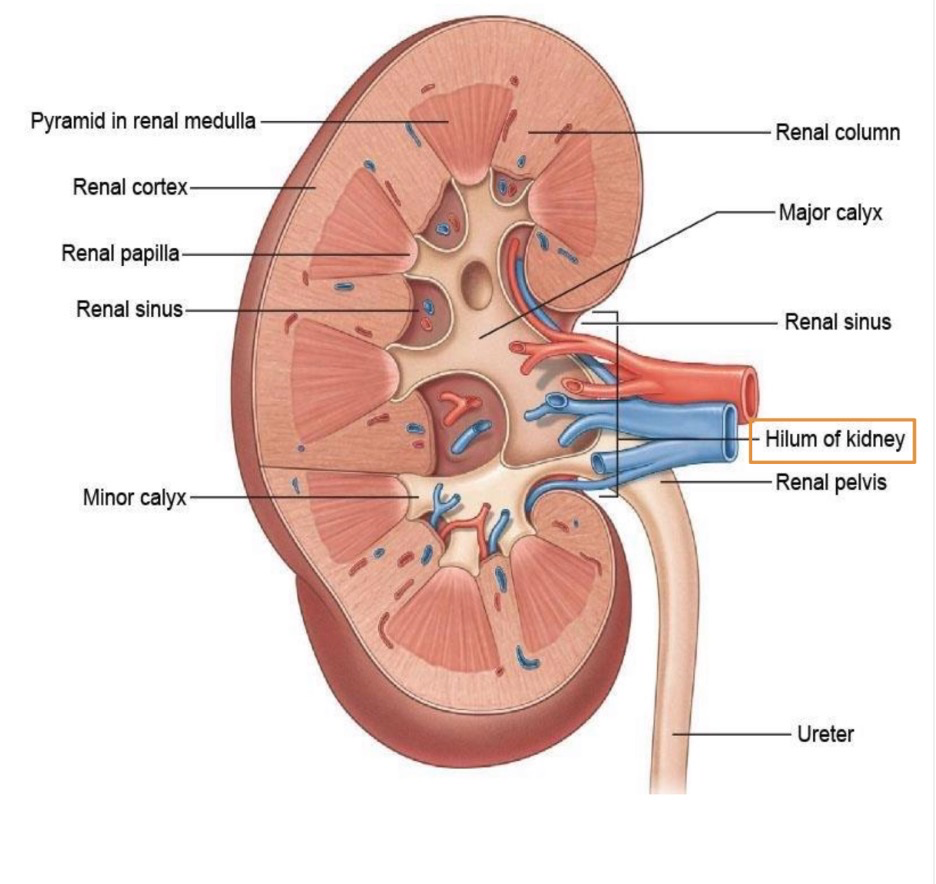
- Transports blood
How does a kidney work?
- Blood passes through kidney 20-25 times a day
- Filter 180 L of blood a day
- Blood enters kidney through arteries which branch until they form tiny vessels
- Vessels entwine with special internal modules called nephrons
- 1 million nephrons in a kidney, form powerful filters, and sift through blood
- Nephrons filter blood using glomerulus and tubule
- Glomerulus
- Blob-like structure
- Only allows certain minerals and vitamins to pass into tubule
- Tubule
- Long, stringy, straw-like
- Tubule detects whether minerals/vitamins are needed in body
- If they are, they are reabsorbed
- Tubule senses compound body doesn’t need, e.g. urea, left over from breaking down proteins
- Redirects it as urine
- Out of kidney, and through ureter
- Ureter empties urine into bladder
- If kidney detects excess water, it directs it into bladder
- Waste and Hydrogen ions are secreted in the tubule, and converted into urine
Miscellaneous
- Urinary system removes urine
- Skin sweat diffuses from blood (salt, urea and water diffuse into sweat glands)
- Lungs release carbon dioxide
- Liver removes amino acids